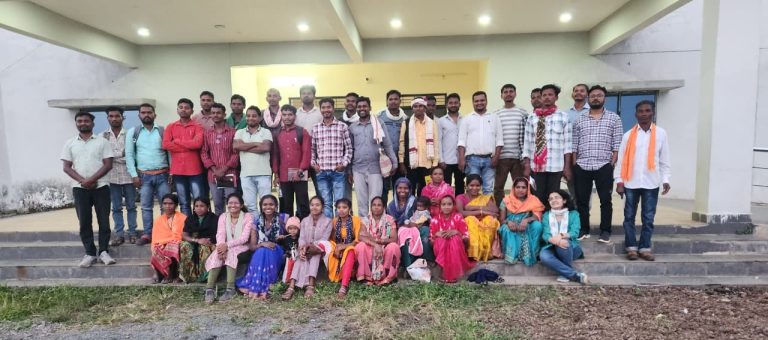One-Day Community Forest Resource Management Workshop in Bastar, CG
Date: October 31, 2025

The ATREE CFR team organized a one-day training workshop focused on Community Forest Resource Management in Bastar District, Chhattisgarh. Representatives from Community Forest Resource Committees (CFRCs) of approximately 9 villages from Bastar district participated in the workshop.
Santu Mourya (FRA Coordinator) and Dr. Shruti Mokashi (ATREE Post Doc) gave a background note about the objectives of the CFRMP and its implementation. Bansingh Mourya and Sukhdev Baghel gave detailed presentations on important provisions of the Forest Rights Act 2006, the objectives of forest management, and key aspects of a successful forest management plan. Later, Dr. Shruti Mokashi explained the key steps of preparing plans following which Anubhav Shori shared notable examples on record keeping and financial management. Finally, participants broke out into groups and drafted forest management plans for their respective villages, concluding the day by presenting their plans.